Emulation and Imitation during Observational Learning
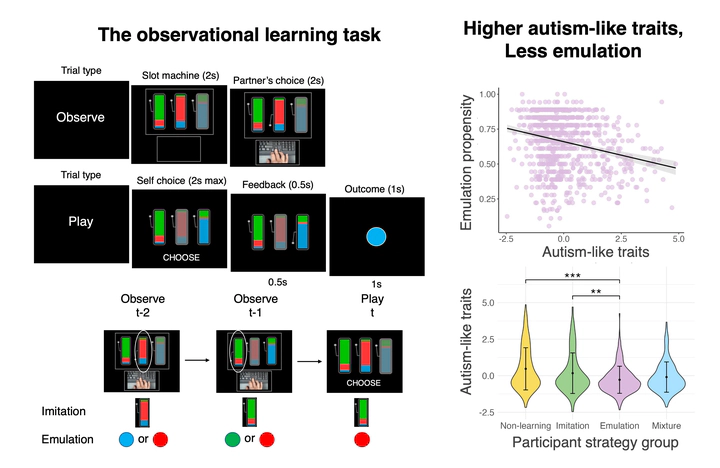
Observational Learning
We learn about the world by observing others and inferring from social cues. Two strategies are typically involved during observational learning:
- Goal emulation: inferring others’ goals and choosing actions based on that inference
- Action imitation: directly copying observed actions without inferring goals
In this study, over 1,000 online participants completed a task designed to dissociate these two strategies.
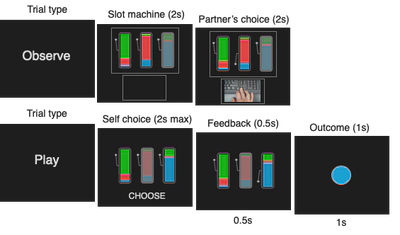
Computational Models of Observational Learning
To capture participants’ strategies, we developed and compared several computational models:
- Imitation model: repeat the partner’s most recent action (left or right slot machine)
- Emulation model: infers slot machine values through Bayesian learning based on the partner’s choice history
- Fixed mixture model: combine imitation and emulation with a fixed probability
- Dyanamic arbitration model: combine imitation and emulation with a changing probability, depending on the reliability of each strategy
- Non-learning model: inattentive or task-irrelevant behaviors
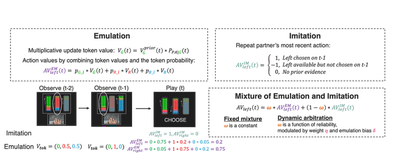
Individual differences in autistic traits
Human social behavior features profound individual differences. Some people are outgoing, others reclusive. Autism has emerged as a dimensional construct that underlines difficulties in social interaction and communication.
Building on prior work linking autistic traits to social learning differences, we hypothesized that individuals with higher levels of autism-like traits would be less likely to rely on emulation.
A couple of results supported our hypothesis, here are two of them.
Using computational model fits, we grouped participants into four strategy types: a non-learning group, an imitation group, an emulation group, and a mixture group. Autistic trait scores varied across groups, with the lowest in the emulation group and highest in the non-learning group.
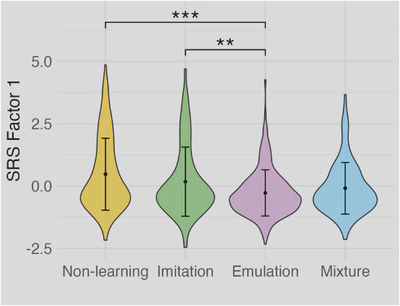
Second, we looked at one parameter in the dynamic arbitration model - the emulation bias. This parameter represents one’s inherent propensity of performing emulation over imitation, independent of the reliabilities of each strategy. We found that higher autistic traits were associated with reduced emulation bias.
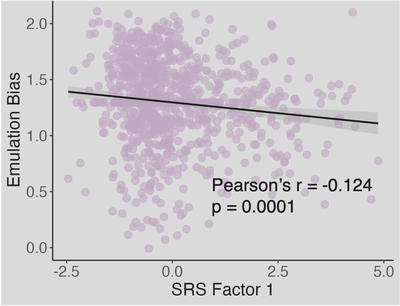
Publication
Now published at Nature Mental Health titled Individual differences in autism-like traits are associated with reduced goal emulation in a computational model of observational learning.
On Media
Please also check the post about this work on PsyPost Autistic traits linked to specific pattern of social learning, study finds.